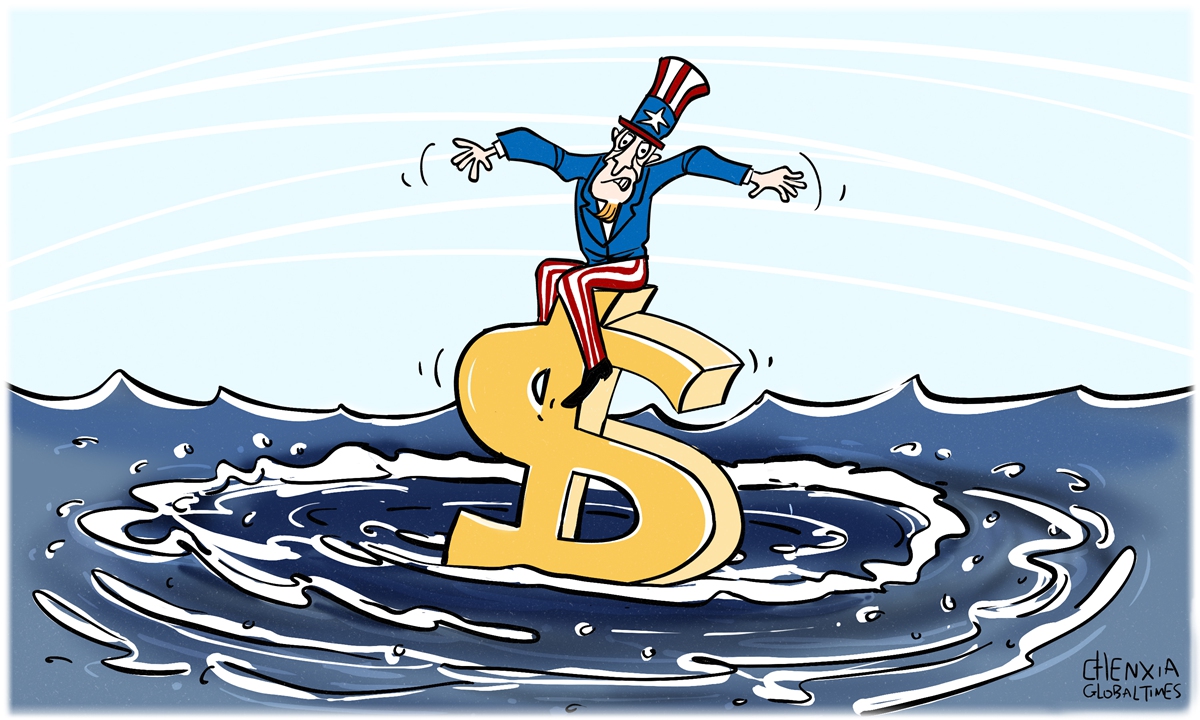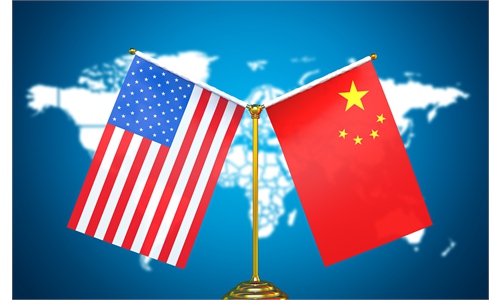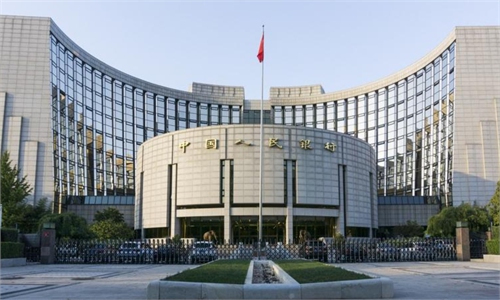
Illustration: Chen Xia/GT
The world has been early awaiting a US interest rate reduction. The Federal Reserve (Fed) has maintained policy rates at 23-year high of 5.25-5.5 percent since July 2023. When monetary policy is kept too restrictive for too long, it can cause harm to the economy, resulting in cramped business activity and higher unemployment rates because employers would have fewer unfilled job openings.
Now, the table is set for the US Federal Reserve to start talking about cutting rates and providing much-anticipated relief to business owners and mortgage loan holders. Barring any surprise rebound in inflation rates, the US central bank is expected to lower its policy rates in September, when the next meeting of policymakers is scheduled.
As the US dollar acts as the primary reserve currency in the world, any change in the US central bank's monetary policy will have profound implications for other countries' currencies. Since the pandemic's onslaught, emerging market currencies have been squeezed by uncertainties surrounding elevated interest rates in the US.
The high rates of 5.25-5.5 percent have attracted funds from non-US markets. Since early 2023, there have been widespread claims and grievances that the Fed's reluctance to cut rates has made monetary policy easing more challenging for many emerging markets.
It is highly justified for emerging market economies to ask for better policy coordination and synergy among the world's major central banks to avert discrepancies in policymaking that often lead to lower currency values in emerging markets. Even some currencies in developed countries have tumbled against the US dollar recently.
The US Federal Reserve's intransigence in cutting interest rates in recent months has made it more challenging for American mortgage holders and business owners who rely on loans. Despite this, US policymakers have remained steadfast in their decision to keep rates high in order to combat inflation. It is widely believed that the Fed's aggressive monetary easing, also called quantitative easing, and the US government's fiscal splurges in 2020 and 2021 have caused a long spell of elevated inflation in the US.
"If we get the data that we hope we get, a reduction of policy rates could be on the table at the September meeting," Fed head Jerome Powell said at a press conference, but he added that the Federal Open Market Committee had made "no decisions about future meetings."
The US job market has displayed some early signs of weakness recently. While the unemployment rate is still low by historical standards, the rate has ticked up lately, as US businesses and institutions have reported fewer new job openings.
Capital market investors worldwide are keen to see the US central bank quickly reduce rates, as lower rates in the US will free deposits in the American banking system and accelerate much-anticipated liquidity flows in the US and other countries. For instance, investors in Asia have been expecting the US central bank to start cutting policy rates in hopes that a steadily easing US monetary policy will "fan out" waves of external liquidity into Asian equities.
The odds are high that US Fed policymakers could meet in September and come out with a decision to cut rates, although it is not yet certain.
"It's going to be inflation data. It's going to be the employment data. It's going to be the balance of risks as we see it - it's going to be the totality of all of that. It is just a question of seeing more good data," said Powell recently.
For investors, Powell's statements and the US Fed's new policy release have reinforced broad market expectations that US interest rate cuts are in the pipeline and may be imminent. But the risks of a sudden uptick in inflation have not completely dissipated. If "more good data" doesn't come in August and September, global investors could still be disappointed to hear US Fed officials say "premature rate cuts" aren't what they wanted.
The author is an editor with the Global Times. bizopinion@globaltimes.com.cn



